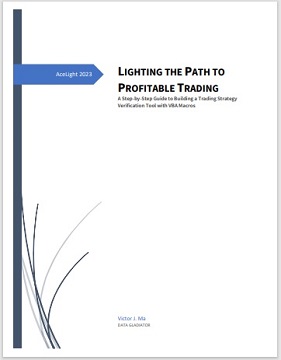Maximizing Profits: Unveiling the Power of Stock Market Dividends Strategy
|
|
Are you tired of getting your financial news from dry, monotonous sources
that make you want to doze off faster than a sloth on a hammock? Well, fear
not, because we're about to dive into the exciting world of stock market
dividends strategy! Grab your popcorn, put on your favorite stock
market-themed pajamas, and get ready for a rollercoaster ride filled with
lucrative dividends and chuckles along the way.
The stock market
presents investors with a multitude of strategies to enhance their returns.
One such strategy that holds significant potential is the stock market
dividends strategy. Dividends are regular cash payments distributed by
companies to their shareholders, making them an appealing option for
investors seeking a reliable income stream. In this blog, we will delve into
the world of stock market dividends and explore strategies that can help you
optimize your investment portfolio.
1. Understanding Dividends
Dividends are a portion of a company's earnings that are distributed to
its shareholders. These payments typically come in the form of cash but can
also be paid in the form of additional shares or other assets. Dividends are
usually paid on a regular basis, such as quarterly, semi-annually, or
annually.
Companies that pay dividends are often well-established,
mature companies with stable cash flows. They choose to distribute a portion
of their profits to shareholders as a way to reward them for their
investment and attract more investors.
2. The Power of Dividend
Investing
2.1. Reliable Income Stream
Dividend stocks provide
investors with a steady income stream, making them an attractive option for
those seeking regular cash flow. By investing in dividend-paying stocks, you
can potentially supplement your income, fund retirement expenses, or
reinvest the dividends to compound your returns over time.
2.2.
Stability in Volatile Markets
Dividend-paying stocks tend to exhibit
more stability during market downturns compared to non-dividend-paying
stocks. The regular income provided by dividends can help cushion the impact
of market volatility and reduce the overall risk in your portfolio.
2.3. Long-Term Growth Potential
Dividend investing is not just about
the immediate income; it also offers long-term growth potential. Reinvesting
dividends can result in the compounding effect, where your investment grows
exponentially over time. This can significantly enhance your overall returns
and help you build substantial wealth.
3. Implementing a Dividend
Strategy
3.1. Dividend Yield
Dividend yield is a crucial
metric to consider when implementing a dividend strategy. It is calculated
by dividing the annual dividend per share by the stock's current price. A
higher dividend yield indicates a higher return on investment. However, it's
important to strike a balance between yield and the company's financial
health to ensure sustainability.
Example: Company A offers a dividend
yield of 6% while Company B offers a yield of 3%. On the surface, Company A
might seem like the better choice. However, further analysis is needed to
evaluate the financial stability and growth prospects of both companies.
3.2. Dividend Growth Rate
While dividend yield provides insight
into the current return on investment, dividend growth rate focuses on the
future potential. The dividend growth rate represents the annual percentage
increase in dividend payments over time. Investing in companies with a
consistent history of increasing dividends demonstrates their commitment to
returning value to shareholders.
Example: Company X has a dividend
growth rate of 8% per year, while Company Y has a growth rate of 2%. Company
X's commitment to increasing dividends suggests that investors can expect a
higher return on investment in the future.
3.3. Dividend Payout Ratio
The dividend payout ratio measures the percentage of a company's
earnings paid out as dividends. A lower payout ratio implies that the
company retains a larger portion of its earnings to reinvest in business
growth. It is essential to assess whether the company can sustain its
dividend payments without compromising its financial health.
Example:
Company P has a dividend payout ratio of 60%, indicating that it pays out
60% of its earnings as dividends. In contrast, Company Q has a payout ratio
of 90%. While high payout ratios may indicate generous dividends, it may
also suggest that the company has limited resources for reinvestment.
4. Dividend Strategies
4.1. Dividend Aristocrats
Dividend
aristocrats are companies that have a consistent track record of increasing
dividends for at least 25 consecutive years. These companies often possess
strong financials, competitive advantages, and stable business models.
Investing in dividend aristocrats can provide investors with a sense of
security and the potential for consistent income growth.
Example:
Procter & Gamble (PG) and Coca-Cola (KO) are renowned dividend aristocrats
that have consistently increased their dividends for several decades. Their
solid performance and long history of dividend growth make them attractive
options for dividend investors.
4.2. Dividend ETFs
For
investors seeking diversification and convenience, dividend exchange-traded
funds (ETFs) can be an excellent option. Dividend ETFs pool together a
collection of dividend-paying stocks, providing investors with exposure to a
broad range of companies. This strategy offers instant diversification while
simplifying the management of your portfolio.
Example: The Vanguard
Dividend Appreciation ETF (VIG) and the iShares Select Dividend ETF (DVY)
are popular dividend ETFs that provide investors with access to a portfolio
of dividend-paying stocks across various sectors and industries.
5.
Risks to Consider
While dividend investing has its merits, it's
important to acknowledge the risks involved:
5.1. Market Volatility
Dividend-paying stocks are not immune to market fluctuations. Economic
downturns, industry-specific challenges, or company-specific issues can
impact the sustainability of dividends. Conduct thorough research and
diversify your portfolio to mitigate these risks.
5.2. Interest Rate
Fluctuations
Dividend yields can be influenced by changes in interest
rates. When interest rates rise, fixed-income investments become more
attractive, potentially leading to a shift away from dividend stocks.
Monitor interest rate trends and adjust your strategy accordingly.
 Whether
you're a beginner or an experienced stock trader, it's crucial to thoroughly
test any trading strategy before using it in live markets. This means
conducting both back-testing and forward-testing to evaluate the strategy's
effectiveness and identify potential flaws or weaknesses. Testing is a
necessary step in the development and implementation of any successful
trading strategy, regardless of its complexity. For more information, Click
LIGHTING THE PATH TO PROFITABLE TRADING: A Step-by-Step Guide to Building a Trading Strategy Verification Tool with VBA Macros to get the whole tutorial handbook for free! Whether
you're a beginner or an experienced stock trader, it's crucial to thoroughly
test any trading strategy before using it in live markets. This means
conducting both back-testing and forward-testing to evaluate the strategy's
effectiveness and identify potential flaws or weaknesses. Testing is a
necessary step in the development and implementation of any successful
trading strategy, regardless of its complexity. For more information, Click
LIGHTING THE PATH TO PROFITABLE TRADING: A Step-by-Step Guide to Building a Trading Strategy Verification Tool with VBA Macros to get the whole tutorial handbook for free!
And click Free Trial to download strategies testing tools, all for a 30-day Free Trial.
Click on Subscription to order more strategies testing tools to help your stock trading.
And there you have it, fellows! We've explored the delightful world
of stock market dividends strategy together. From the joy of unexpected cash
showers to the stability they provide during market storms, dividends are
like the financial comedy show that keeps on giving.
So, as you
venture forth into the vast realm of dividend investing, remember to choose
wisely, diversify your portfolio, and keep an eye on every kind of risk. The
stock market may have its ups and downs, but with dividends in your corner,
you'll have a reliable income stream that's sure to put a smile on your face
if you are fortunate enough.
Now go forth, armed with knowledge,
laughter, and the determination to maximize your profits through the power
of stock market dividends. Happy investing, and may your dividends flow like
a never-ending stream of punchlines!
|


|

Free Tutorial
Share
|
|
|
|